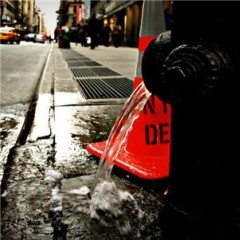Its one thing having to deal with a leak but quite another to be in the embarrassing situation of being blissfully unaware you're leaking until someone kindly points it out. For all affiliate marketers busily trying to boost their website’s SEO and PageRank, there’s a common problem that could be costing you precious link juice.
“What the …?!? Link juice? Never heard of it.” If this is the first time you’ve heard the phrase “link juice” then best we explain it for you here.
What is link juice?
Link juice was a phrase coined by Greg Boser whose site Web Guerrilla first used it to describe what is technically known as PTR (Pass Through Ratio). Link juice primarily refers to the importance of the “vote” given from one website to another, via linking. It can also refer to the votes given to pages within a website. Top level pages, such as the home page, pass on link juice to lower level pages.
The aim, with your website, is to control the flow of link juice to tell the search engines which pages are important and which arent. This practice is known as PageRank sculpting.
How could I be leaking link juice?
We will mainly look at two issues that could be affecting your site; that of passing on link juice to unimportant pages and also missing pages on your site that result in 404 errors for visitors.
Firstly, the issue of leaking link juice to unimportant pages on your site. Some companies have found their highest ranking pages are actually ones such as their privacy policy or a company profile page. Ok so this isnt quite the end of the world but honestly wouldn’t you want pages that are actually selling your stuff to be your top ranking pages? The reason for this is not just that these unimportant pages are stuffed with your company name and/or product name but that they also get a healthy dose of link juice from linking directly to your high ranking homepage, plus every other page on your site.
Secondly, the missing pages issue can result in your site losing precious link juice, particularly where a highly ranked page is no longer available or the URL has changed. The new page created to replace this missing page is being denied all the link juice its predecessor enjoyed!
So how can I plug the leak?
Plugging up leaking link juice is relatively straightforward; no plumbing skills required!
Unimportant and non-essential pages
To deal with link juice being leaked to non-essential pages simply add a nofollow tag to these links. This is particularly important where you have a common header or footer for all your pages, which also include navigation.
By adding a nofollow to unrelated or unimportant pages you can promote your key pages to search engines and boost their ranking. The popular SEO practice of siloing involves having important pages only dofollow link (simply the absence of the nofollow tag) to other related pages for the same keyword phrases.
If you're not sure how to use the nofollow tag, check the example below.
<a rel="nofollow" href="http://www.somesite.com">Link to somesite</a>
In this example, Somesite.com does not get any link building benefit (they still get the benefit of direct traffic to their site). Your site (or page) retains its “link juice” so your PageRank is not affected.
Myth buster! It was long thought that you shouldn’t use nofollow on internal links since it implied you don’t trust these pages. This is a myth that Matt Cutts from Google has long since put out of its misery!
By adding the nofollow tag to those pages that are less important you now have more link juice to pass on to the pages you do want to promote, as shown in the diagram below.

Missing (404) pages
What about those missing pages that had plenty of link love from the search engines but have now disappeared faster than George Bush at Obama’s inaugaration?
Well firstly you need to know what pages are missing and the easiest way to do this is register your site with Google Webmaster Tools. This will report on any search bot crawl errors including pages not found.
If a highly ranked page is now showing as missing, it’s important to retain that link juice by re-adding the page and adding a 301 redirect to its replacement page.
The example below shows how easy it is to implement a 301 permanent redirection on a PHP-enabled website. Simply copy this code to the top of the page you are redirecting, entering the new URL in the location tag. If your site is not PHP-enabled you can create 301s by modifying the htaccess file or IIS.
<?PHP Header( "HTTP/1.1 301 Moved Permanently" );
Header( "Location: http://www.newurl.com" );?>
So hopefully this has been helpful to not only make you aware of leaks but how to spot them and most importantly plug the leaks and effectively manage that precious link juice. Obviously making these changes wont result in some miraculous leap in page ranking but as we all know SEO is ultimately the practice of making lots of small changes that have a big effect.
If you use nofollow on your site, how do you use it? Conversely what links don’t you use it on?
Photo credit: morado

Allan James • 16 years ago
I'm off to my blog right now to add the NoFollow to the Privacy, Terms and one other page.
Building Rank takes effort and there's no use in letting Link juice be wasted on pages that don't contribute to you making money.
Again, thanks
Allan
Christoph • 16 years ago
Christoph Gold
mark • 16 years ago
Regards,
Mark
Ron • 15 years ago
Jason Dodd • 15 years ago
The bucket illustration still applies for external links but not for the purpose of page sculpting.